Roofers Skipping This $5 Flashing Is Costing Homeowners Thousands!

There is no excuse for a roofer to save 10min and $5 only to leave an expensive & concealed problem for someone else to deal with. To be fair not all roofers skip this flashing, some may have never heard of it, while others who are knowledgeable tradesmen & take pride in their work, will always install this key piece of flashing.
A Simple Principal
Roofs are great systems for managing water, they are designed around the basic physics of water and gravity. Water rolls down hill, so higher shingles or flashings will need to overlap and direct water onto the lower ones and so on until they reach a gutter. Pretty simple principle, if you follow it your roof will not leak, go against it, your roof will fail.
Some Basics of Roofing
Everyware shingles meet siding at a sloped angle Step Flashing is used. It’s fair to say just about every roofer knows about Step Flashing. These Step Flashings must be tucked behind the (WRB) Weather Resistant Barrier (aka:House Wrap) and they must integrate with the shingles to keep water from accessing the wood framing.

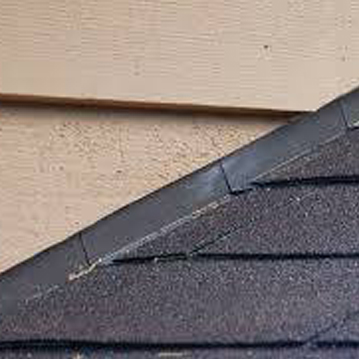
It’s Always In The Details
The problem comes in when the step flashings meet a gutter. Like in these images below.
So What’s The Harm?
Water running down the roof & step flashings if not redirected will run behind the siding and WRB where it will cause wood rot. Often this leaking & rot will go unnoticed for years before it is discovered. By then its likely extensive repairs to the framing, siding, overhang and sometimes interior walls are needed.


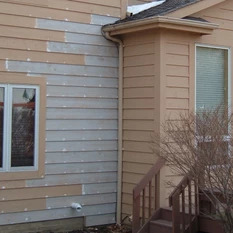
I often see hasty attempts at repairs like squirting caulk into these areas or installing aimless pieces of aluminum in a vain attempt to stop or redirect the water. No amount of goo or surface water diversion will ever fix this problem, remember the flashings are tucked behind the WRB to begin with, and must stay that way.
A: Well we just need to follow the Simple Principle described in the 2nd paragraph and we do that with a Kick Out Flashing.
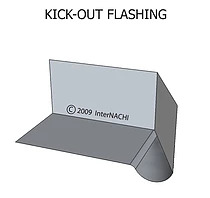
Enter The Kick Out Flashing
Anytime an overhang intersects with an adjacent wall, a Kick out flashing is to be used as the last piece of step flashing, just as it dumps into the gutter. Like an off ramp on a freeway it directs(or Kicks Out) the water from the step flashings into the gutter and prevents it from getting behind the siding and WRB.
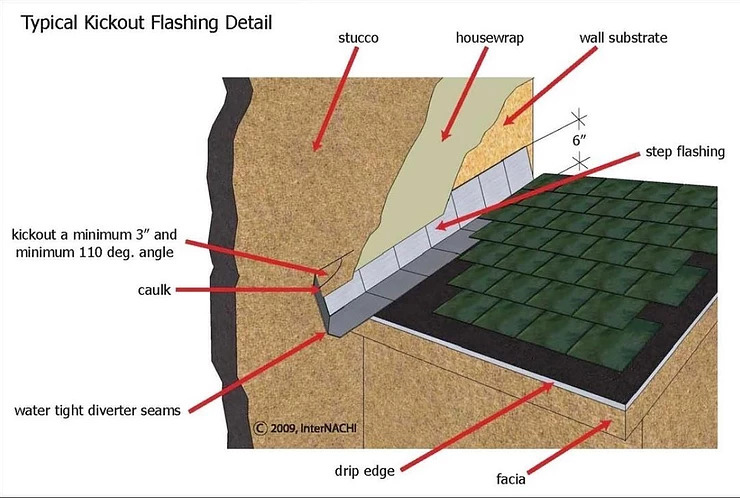
So How Do I Know If My Roof Is Missing Flashings?
Here are some signs you can look for yourself.
-
Dark or discolored siding/brick below an overhang
-
Cold, soft, discolored or bulging drywall/plaster on the interior side of a wall
-
Green algae growth concentrated below an overhang
-
Soft or discolored wood siding below the overhang
-
Remember the worst of the damage will be inside the wall
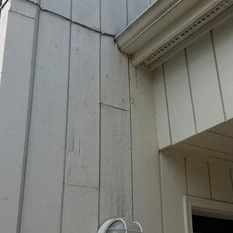 .
. 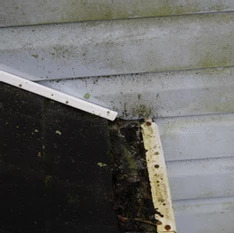 .
. 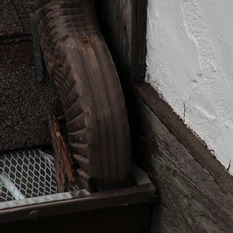
Conclusion
A kick out flashing is a critically important little flashing that some roofers fail to install. It can damage the inside of your wall where it is not seen until the damage is already significant. When In doubt Hire a professional. A reputable Contractor, Roofer or Licensed Home Inspector will be capable of assessing your roof and making good recommendations.
Do you have a mystery leak at your house?
Leave me a comment below I’m happy to help in any way I can. You can even add a photo for me to take a look at.

Arthur Duhaime is a Ohio Licensed Home Inspector and Ohio Department of Commerce Certified Instructor for Real Estate Continuing Education. Arthur’s industry leading home inspections glean insight from 2 decades of real construction industry experience.
Leave a Reply
Want to join the discussion?Feel free to contribute!


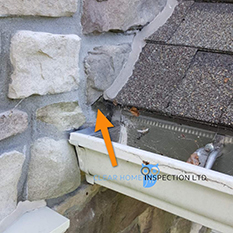

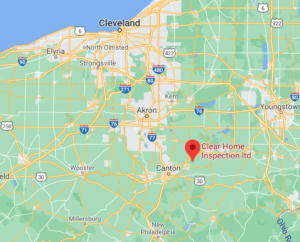


You make a great point about how kick out flashing is tricky to install. A storm rolled in a wrecked a bunch of shingles. I’ll have to consider getting a contractor to swap everything out with good tiles.
Hello. Have a question hoping you could answer. I have a ceiling leak that extends approximately 15 feet along a line underneath where the roof line meets the sloping sidewall. From what I can tell they used the original step flashing and did not replace it when the roof was replaced by the previous owner in 2012. The original roof was the roof that was replaced, it was cedar shake and was replaced with asphalt shingles. My question is do you have any idea what may be the cause? The original owner, whom I know, said there was a leak they found and when they called the new roofer he said it was from a window above and caulked the hell out of it. Is there anything I can do as far as having them replace the problem? I have a 50 year “gaf” weather shield warranty and the roofing company has a lifetime warrant on workmanship. When I reviewed the paperwork they only had listed replacement of the chimney flashing and did not specifically mention any of the step flashing. I am thinking it is the step flashing but thought I would ask. I also read where you should always replace step flashing going from cedar shake to asphalt. Any info would be greatly appreciated.
Thanks,
Hi John
Thank you for reaching out! With most not so obvious leaks it usually is in the details. Without seeing it for myself I can be of very limited help. However I would start by looking at the window that had “the hell caulked out of it” Gobs of caulk is a sure sign of an issue and temporary or unprofessional repairs. As for the step flashing, re-using existing is typically not an issue unless they are damaged. If they did not adjust them to be properly fitted for the thickness & overlap of the asphalt shingles vs the shake shingles then that area may leak during wind driven rain or melting snow. Your best course is to contact a reputable roofing company to have this looked at. If you are in NE Ohio I can do a target inspection for you to determine the waters point of entry. Alternatively you can post or send me some photos of what you are talking about and I may be able to give you more insight. Thanks again for posting and best of luck.
Absolutely! Cutting corners on flashing may save minutes, but it risks thousands in damage later. Quality roofers know the details matter, step flashing done right is key to long-lasting protection.
Thanks Robert
I agree 100%